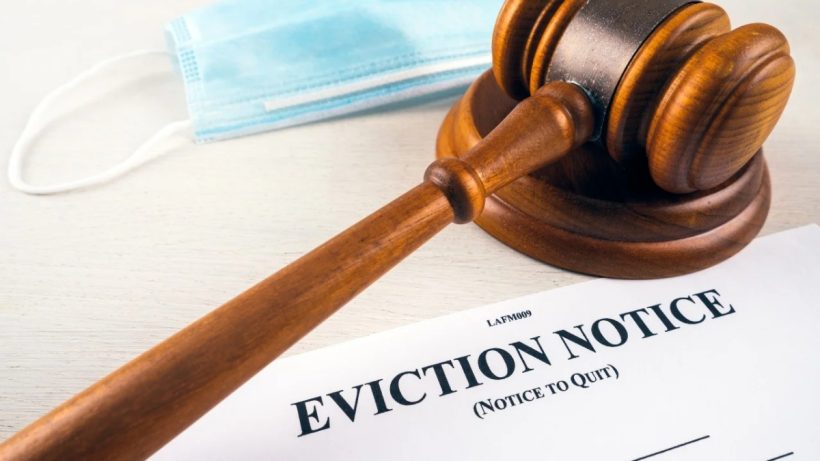Evictions are a challenging aspect of property management and tenancy. In Maryland, the eviction process is governed by a set of laws designed to balance the rights of landlords and tenants. One critical component of this process is the “Maryland 30-day eviction notice,” which plays a pivotal role in both initiating and navigating evictions. This article aims to provide a thorough understanding of the Maryland eviction process, emphasizing the significance and application of the 30-day eviction notice.
Understanding the Maryland Eviction Process
The eviction process in Maryland is a legal procedure that allows landlords to remove tenants from rental properties. This process is regulated to ensure fairness and legality. The primary reasons for eviction typically include non-payment of rent, lease violations, or the expiration of a lease term. However, before any eviction can take place, landlords must follow specific steps to ensure compliance with state laws.
1. Notice of Lease Termination
The eviction process begins with the landlord issuing a notice of lease termination to the tenant. This notice is a formal declaration that the landlord intends to terminate the rental agreement. The type of notice and the time frame required vary depending on the reason for eviction. For instance, a different notice period applies for non-payment of rent compared to other lease violations.
2. The 30-Day Eviction Notice
The “Maryland 30-day eviction notice” is one of the most common notices issued in the state. This notice is typically used when the landlord wishes to terminate a month-to-month tenancy or when the tenant has violated specific lease terms. It is a crucial document that must be delivered correctly to ensure the eviction process proceeds smoothly.
- Purpose: The 30-day notice serves to inform the tenant that they must vacate the premises within 30 days. This period allows the tenant time to find alternative housing and make necessary arrangements.
- Content: The notice must include specific information to be legally valid. This includes the date of the notice, the tenant’s name, the property address, the reason for eviction, and the date by which the tenant must vacate the property.
- Delivery: The notice must be delivered in a manner prescribed by Maryland law. This can include personal delivery to the tenant, delivery to a person of suitable age and discretion at the residence, or mailing the notice to the tenant’s last known address.
3. Filing an Eviction Lawsuit
If the tenant does not vacate the property within the specified 30 days, the landlord can proceed with filing an eviction lawsuit, known as a “Complaint and Summons Against Tenant Holding Over,” in the District Court of Maryland. This step formally initiates the court process to seek an order for eviction.
4. Court Proceedings
After filing the complaint, a court date is set. Both the landlord and the tenant will have the opportunity to present their cases before a judge. It is crucial for both parties to bring all relevant documentation, such as the lease agreement, the 30-day notice, and any correspondence related to the eviction.
5. Judgment and Writ of Restitution
If the court rules in favor of the landlord, a judgment for possession will be issued. The landlord can then request a “Writ of Restitution,” which authorizes the sheriff to oversee the physical eviction of the tenant if they do not leave voluntarily.
Eviction
The final step in the process is the actual eviction, which is carried out by the sheriff’s office. The tenant’s belongings are typically removed from the property, and the landlord regains possession.
Key Considerations for Landlords and Tenants
Understanding the eviction process and the use of the 30-day eviction notice is crucial for both landlords and tenants. Here are some key considerations:
- Legal Compliance: Landlords must ensure that they comply with all legal requirements when issuing a 30-day notice and throughout the eviction process. Failure to do so can result in delays or dismissal of the eviction case.
- Tenant Rights: Tenants have rights and protections under Maryland law. They can contest an eviction in court if they believe it is unjust or if the landlord has not followed proper procedures.
- Communication: Open communication between landlords and tenants can often resolve disputes without resorting to eviction. Negotiating lease terms, payment plans, or addressing issues early can prevent the need for legal action.
- Seeking Legal Advice: Both parties should consider seeking legal advice to understand their rights and obligations. Legal professionals can provide guidance on how to navigate the eviction process effectively.
Conclusion
The Maryland eviction process, particularly the use of the 30-day eviction notice, is a structured legal procedure that requires careful attention to detail. For landlords, it is essential to follow the prescribed steps to ensure a smooth and lawful eviction. For tenants, understanding their rights and responding appropriately to notices can help protect their interests. By navigating this process with diligence and legal awareness, both parties can achieve a resolution that respects the rights and responsibilities established by Maryland law.
Laila Azzahra is a professional writer and blogger that loves to write about technology, business, entertainment, science, and health.
